Off The Bookshelf: 1984
Last year was certainly an interesting one for history, but also for my reading list! I finally got around to enjoying a few classics I’d been wanting to read for years, so today I’m focusing on one of them for my first book review of 2018. As if you haven’t heard about it enough in the past year, here’s my review of 1984 by George Orwell!
Summary
First published in 1949, 1984 (or Nineteen Eighty-Four) is a dystopian political novel and the last book ever written by George Orwell. The protagonist of the story is Winston Smith, an Outer Party member living in the fictional totalitarian superstate of Oceania. The government of Oceania is run by the Inner Party, commonly referred to only as the Party, and enforces an ideology known as Ingsoc.
Winston works in the Ministry of Truth, revising historical records for the government while secretly hating the Party and dreaming of rebellion against their leader, Big Brother. The novel follows Winston as he navigates through a world where history is fiction, the government is always watching you, and independent thinking is punishable by death.
Review
First off, I know it may seem like I only read this book now because it feels more relevant than ever, but while that was a valid reason that did make the book easier to find (I picked it up from a “bestsellers” table at Barnes & Noble), the truth is that George Orwell’s 1984 is a book I’d been wanting to read for years but that I hadn’t found the time (or copy in English) to read until last year.
Having said that, the fact that I read the book in 2017 may have made it that much more realistic and terrifying.
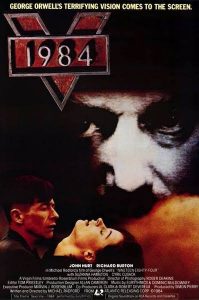
Movie poster for 1984 (1984)
The totalitarian nightmare that is the world of 1984 is one of the scariest things I’ve ever read in a book, probably because it feels so real. Modern history aside, the idea of an authoritarian government with absolute power existing only 35 years into the first edition’s future speaks volumes about how easily people can be manipulated and controlled.
The most obvious criticism within this theme is against communism (Ingsoc being short for “English Socialism”), which was still on the rise in Orwell’s day, but the author was warning us about the dangers of psychological manipulation and the control of information even in democratic societies. As is mentioned later in the story, the Party seeks power solely for the sake of power, and in so doing, deprives humanity of the very freedoms that make us human.
But as noted in this TED-Ed video, “authoritarian alone does not Orwellian make.” The scariest part of Oceania’s totalitarian regime isn’t the omnipresent surveillance nor the persecution of individualism, terrifying as they are; it’s the control of thought and behavior through language.
The official language of Oceania is Newspeak—a version of English stripped down to its barest bones. In Newspeak, most words have a single concrete meaning, sentences are constructed via a basic grammatical system, and entire words and definitions have been scrapped from the dictionary. The point of this is to completely eliminate critical thinking from the population, thus maintaining the Party’s power indefinitely. If that idea doesn’t send chills down your spine, I don’t know what will.
It is in these portrayals of language and thought that George Orwell’s astute observations about society are most evident. In his essay “Politics and the English Language” (1946), he examines the use of language as a political device—or more accurately, the distortion of language as a catalyst for political manipulation.
Political language — and with variations this is true of all political parties, from Conservatives to Anarchists — is designed to make lies sound truthful and murder respectable, and to give an appearance of solidity to pure wind. – George Orwell, “Politics and the English Language” (1946)
Overall, 1984 is a chilling yet fascinating read that deserves its place among the greatest novels ever written for its timeless message of warning to humanity. Though I’m sure he could never have imagined a future with the Internet and social media, Orwell was right to urge us not to lose our language and individual thought. They’re our greatest defenses against the threat of a world where war is peace, freedom is slavery, and ignorance is strength.
Inspiration
Orwell’s 1984 is considered one of the most powerful and influential literary works of the 20th century, and with good reason. Despite having been written in the late 1940s, the book only seems to become more relevant with each passing year. Why else do sales of this novel continue to spike over half a century since its debut?
 Along with Yevgeny Zamyatin’s We and Aldous Huxley’s Brave New World, 1984 is part of the trilogy of quintessential “negative utopia” novels of the mid 20th century. To this day, it inspires us to imagine a world without the basic freedoms we take for granted and to question if we’re really headed in the right direction as a society.
Along with Yevgeny Zamyatin’s We and Aldous Huxley’s Brave New World, 1984 is part of the trilogy of quintessential “negative utopia” novels of the mid 20th century. To this day, it inspires us to imagine a world without the basic freedoms we take for granted and to question if we’re really headed in the right direction as a society.
In the digital age, we’ve long been at the point of willingly trading privacy for convenience, and a case can be made for how we already practice “doublethink” every day. It’s no wonder this novel continues to top bestseller charts in the 21st century: we’re already living in the future of mass surveillance and public manipulation!
It’s worth noting that spikes in sales of 1984 are not that uncommon. Remember Edward Snowden and the NSA scandal? Current events have a way of drawing people back to this classic again and again, but whether that’s a good or a bad thing depends on your perspective. Yes, it’s scary to think we’re becoming the world Orwell predicted in the ’40s, but it’s good that we’re recognizing the signs early, right?
While it’s easy to read a book like 1984 and fear the expanding powers of government, Orwell’s story is more of a cautionary tale for society as a whole. It’s not just our democracy and political integrity that we must protect, but our language and our ability to think critically.
Like the people of Oceania before the perpetual war and the rise of Ingsoc, we are responsible for the course our history takes. The difference is that we may still have a chance to preserve our rights and defend our individuality before it’s too late.
Off The Bookshelf: The Picture of Dorian Gray
Last year, I reached my first-ever Goodreads Reading Challenge goal of ten books, most of which were historical fiction. I’ve already covered Pride and Prejudice and Sense and Sensibility by Jane Austen in my Off the Bookshelf segment, so today I’m switching over to another author whose novel I really enjoyed: The Picture of Dorian Gray, by Oscar Wilde!
Summary
The Picture of Dorian Gray is the only novel written by Irish poet and playwright Oscar Wilde. First published in Lippincott’s Monthly Magazine in July 1890, the novel exists in three versions: the censored 13-chapter edition published in the magazine in 1890, the revised 20-chapter book edition published in 1891, and the uncensored 13-chapter edition submitted to the magazine with all of Wilde’s original material intact. The story follows the moral corruption and downfall of Dorian Gray, a handsome yet narcissistic young man whose vanity leads him to wish that a painting of himself will age in his stead. After his wish comes true, Dorian succumbs to a hedonistic lifestyle of vice and sin from which his insatiable desire for pleasure leaves him little chance to escape.
Review
If it were only the other way! If it were I who was to be always young, and the picture that was to grow old! For that—for that—I would give everything! Yes, there is nothing in the whole world I would not give! I would give my soul for that! – Dorian Gray
A brief disclaimer: Because Wilde’s novel exists in three different forms, each one differs slightly from the others, in some cases affecting the plot. The version I read is the 1891 20-chapter book, so this is the edition that will be referenced throughout this review.
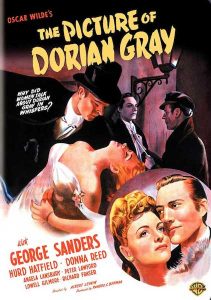
Movie poster for The Picture of Dorian Gray (1945)
The Picture of Dorian Gray has often been compared to the Faust story, in which a dissatisfied scholar sells his soul to the Devil for unlimited knowledge and pleasure. Similarly, in a moment of weakness and newfound vanity, Dorian offers up his soul for the chance to remain young and handsome forever. In response to this wish, the painting becomes a mirror of Dorian’s soul and begins reflecting the effects of his actions that his body will now be spared. This inciting incident plays into the themes of valuing youth and beauty above all else and the consequences of choosing pleasure over virtue.
One of the most prominent themes in the book is the conflict between morality and pleasure. Although Dorian initially struggles with his new philosophy, his selfish desires ultimately overpower his guilt: after his romance with the young actress Sibyl Vane ends tragically, the subtle change in his portrait’s face proves his actions will have no visible consequence, as the painting will bear all the marks of his sins for him. After accepting Sibyl’s death as an artistic personification of tragedy, Dorian is free to pursue pleasure without risk and spends the next several years of his life indulging in various forms of gratification. Only in the final chapters of the story does he come to question if perpetual youth was worth the price of his soul.
Indeed, the fact that his artistic lifestyle costs him his soul is what makes Dorian Gray such an enigmatic character. Having given up his emotional depth, the protagonist’s true personality remains a mystery to the reader throughout the story. One detail of the novel that makes this evident is the heavy color motif. So many descriptions in the novel involve color in some way, and while at first I dismissed these vivid descriptions as the flowery writing of a poet, I later recognized their allusion to the main character’s internal conflict. The paradox of The Picture of Dorian Gray is that by giving up his soul for the pursuit of pleasure and the perpetuation of beauty, Dorian is no longer able to appreciate either—that is, in a world full of color and beauty, Dorian’s soulless existence is perpetually gray. Thus, Wilde’s novel—at least the revised version—supports the idea that art alone cannot bring happiness; one must have emotional depth in order to appreciate it.

From left to right: Lord Henry Wotton, Dorian Gray, Basil Hallward (Dorian Gray, 2009)
Aside from Dorian, the story features two other important characters: Basil Hallward, the painter of the infamous picture, and Lord Henry Wotton, a witty aristocrat who advocates “New Hedonism”. Both are equally fascinated by Dorian’s beauty but stand at opposite ends of his moral spectrum: Basil represents conformity to moral standards while Lord Henry represents the temptation of sin. In this way, these two gentlemen play the roles of Dorian’s “shoulder angel and devil”, respectively, and personify the novel’s overarching conflict between virtue and hedonism: Basil sees only beauty in Dorian and encourages him to remain virtuous, while Lord Henry lauds his youth and persuades him to live for pleasure above all else. And although Dorian never escapes from the guilt the painter evokes in him, the fact that the story plays out far worse for Basil than for Lord Henry further supports the novel’s theme of beauty’s superiority over virtue.
Interestingly, The Picture of Dorian Gray presents an unusual example of an unscrupulous protagonist who repeatedly dodges moral justice. While Dorian influences several people to unfortunate ends throughout his life, he himself doesn’t get what he deserves for almost the entirety of the novel. While this may be an allusion to Wilde’s aesthetic beliefs, it’s more frequently interpreted as a comment on society’s superficiality and hypocrisy; although several rumors emerge about Dorian’s immoral exploits over the years, his peers nonetheless continue to accept him because he’s beautiful and, by all appearances, innocent. Yet as with any Faustian story, sin is ultimately punished in the end, thus completing the theme of eternal pleasure coming at an exceedingly high cost.
The Picture of Dorian Gray is an intriguing novel, a mix of Gothic horror with social and artistic commentary that never seems to settle on a single form. Even the moral of the story is not so black and white as its similarity to the Faust fable would suggest, as the main character doesn’t suffer the consequences of his actions until the very end, and even then justice is brought about by his own hands. Yet by all accounts, with its enigmatic themes, poetic motifs, and structure of an unusual moral fable, Wilde has created nothing less than an outstanding and fascinating work of art.
Inspiration
There is no such thing as a moral or an immoral book. Books are well written, or badly written. That is all. – Oscar Wilde
In a strange meta twist, the most fascinating aspect of The Picture of Dorian Gray may actually be the author’s preface in the book edition. When Oscar Wilde first submitted his manuscript for publication, the editor of Lippincott’s Monthly Magazine censored the story, removing roughly 500 words without the author’s knowledge. Nevertheless, the novel was widely decried as a violation of public morality. A year later, upon publishing the revised book version, Wilde issued a preface to address these criticisms and defend his work, claiming in this artistic manifesto that the only point of art is to be beautiful, not to serve a moral purpose.
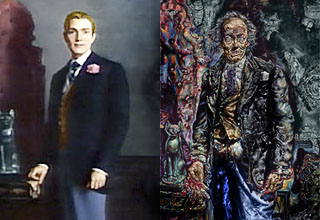
Dorian’s painting, before and after
(Image source: TV Tropes)
Yet in The Picture of Dorian Gray, the eponymous painting itself serves a moral purpose by shedding light on the high price of vanity. Despite the author’s advocacy of aestheticism, his novel suggests that art always contains some degree of meaning: though Dorian constantly tries to immerse himself in a purely artistic lifestyle, he can never escape the haunting lesson in the portrait that bares his corrupted soul. Thus, while he may not have written a truly aesthetic piece, Wilde has nonetheless created a stunning work of art that inspires a poetic theme: art and morality are perpetually intertwined.
As far as artistic inspiration, this novel certainly has its fair share of philosophy. One of the most intriguing aspects of the story is Lord Henry’s powerful influence over the naïve young Dorian. Although Lord Henry’s beliefs contrast heavily with the standards of his time, he speaks with such wit and persuasive language that one can’t help but be drawn to his ideas, however misguided they are. Indeed, the only character immune to these ideas is Basil, whose conventional mindset keeps him morally grounded but makes him utterly boring in the eyes of his impressionable muse. Reading Lord Henry’s speeches, I could easily understand how any weak-minded individual would embrace his poisonous philosophy, which thankfully is revealed to be shallow and impractical by the second half of the story. If anything, the novel is a cautionary tale about the consequences of trying to live such a hedonistic life: the pursuit of pleasure may satisfy the senses with each experience, but it still isn’t worth giving up one’s soul.
Overall, I found The Picture of Dorian Gray to be an enjoyable and intriguing read. Its themes of morality, superficiality, and artistic living make it a notable addition to literature’s vast collection of moral fables. Yet the fact that Wilde was such a strong proponent of aestheticism raises the ultimate question: if his philosophy was to create “art for art’s sake”, should we really put so much weight on the moral themes of his only novel, or take a step back to simply glimpse these undertones while admiring the beauty of his work?
Off The Bookshelf: Sense and Sensibility
Back in January, I finally returned to my Off The Bookshelf segment with a review of Jane Austen’s Pride and Prejudice. So today, I’d like to continue my reviews by writing about the other Austen novel I read last year. Since I’ve definitely been enjoying reading her literature, there was really only one novel I could review next: Sense and Sensibility!
Summary
Sense and Sensibility was Austen’s debut novel, first published in London in 1811. The story follows sisters Elinor and Marianne Dashwood as they adjust to their new life with their widowed mother and younger sister, who have all been left impoverished after Mr. Dashwood’s death. Over the course of the narrative, the sisters experience love, romance, and heartbreak, and eventually come to realize that they must learn to master the delicate balance between sense and sensibility in order to achieve happiness.
Review
Though I wouldn’t say I liked it as much as Pride and Prejudice, I enjoyed Sense and Sensibility for Austen’s realistic take on romance and manners, seasoned with all her classic humor and wit. Much like in the author’s more popular novel, the main characters of this story are faced with the challenge of finding love in a world where their low income and social status put them at a severe disadvantage. What really sets this novel apart from its successor, however, is the comparison it draws between the tempers of Elinor and Marianne, who each occupy one extreme of the romance-realism spectrum.
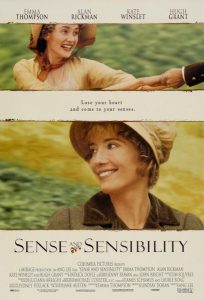
Movie poster for Sense and Sensibility (1995)
As the title suggests, the most prominent theme in Sense and Sensibility is the contrast between good sense and overt sensitivity (known as sensibility back then). As the eldest Dashwood sister, Elinor has the best judgment in her family and is highly skilled at exercising good sense and composure. Her younger sister Marianne, on the other hand, has no control over her emotions and no desire to keep her overly sensitive demeanor in check, favoring romantic idealism over etiquette. This contrast between their personalities makes for several interesting situations throughout the story, but in the end both sisters learn the same valuable lesson: too much sense or sensibility only leads to unhappiness. Only after Elinor learns to open her heart to sensibility and Marianne learns to temper her spontaneity with sense do they both achieve their happy endings.
Another major theme in the book is the role of money and social standing in romance. Though her novels all have happy endings, Jane Austen was never one to tell an idealistic love story; in her view, even the truest love isn’t immune to the real-world obstacle of low income. In the most notable example, Marianne and Willoughby seem like a perfect match: they’re both romantic and outspoken about their opinions on art and love, and spend so much time together that everyone assumes they’re engaged before they even say a word. Unfortunately, being one of the author’s well-known “hero caricatures”, the charming Willoughby couldn’t be anything less than a scoundrel, and sure enough, his expensive tastes coupled with Marianne’s poverty lead him to jilt her for a wealthy young lady he doesn’t love. Funnily enough, the same obstacle of wealth turns out to be a saving grace for Edward Ferrars, who for most of the story finds himself honor-bound to a loveless engagement only to be saved at the end from said commitment by his disinheritance from his mother, leaving him free to give his heart to Elinor after his conniving fiancé abandons him. From beginning to end, wherever there are love and romance, the shadow of money looms in the background.
Overall, Sense and Sensibility is an enjoyable read that shows less-than-idealistic romance in a humorous light, as well as an interesting dynamic of character development between two polar opposite sisters. Just as Marianne learns from Elinor that excessive emotion can destroy one’s life, Elinor learns from Marianne that excessive repression of emotion leads to intense suffering and risk of abandonment. Still, in true Austen fashion, both sisters achieve their happy endings by the story’s conclusion, finding comfortable lives with gentlemen who can provide them with all the security and emotional fulfillment they desire. In this way, from her very first novel, the author reveals that despite all the realistic obstacles in its way, romance can still thrive in a world plagued with social barriers, a hope not yet forgotten in the modern age.
Inspiration
Much like Pride and Prejudice, Sense and Sensibility offers a glimpse into the romantic and realistic elements of past life that have survived into the present. The novel also teaches a valuable lesson on the importance of both practicing good sense and being willingly sensitive, albeit a somewhat imbalanced one that favors sense. We shouldn’t give our emotions total control over our happiness, but we also shouldn’t be afraid to feel vulnerable in the pursuit of love. There are plenty of opportunities in life to be both sensible and sensitive; it’s all a matter of exercising the right judgment.
Though her novels often highlight the limitations placed on women in the society of her day, Jane Austen clearly had a way of demonstrating the strength that women have always had to succeed within their means. Because of that, I know I can always turn to one of her novels for inspiration on writing heroines with real personalities, issues, and aspirations. Whether you seek inspiration for historical fiction, realistic characters, or contrasting themes in human behavior, Sense and Sensibility is an excellent novel that warrants a place beside Pride and Prejudice on any Austen fan’s bookshelf.
Off The Bookshelf: Pride and Prejudice
Welcome back to my Off The Bookshelf segment! It’s been almost a year since I’ve written a book review for my blog, which is a shame since I do love recommending my favorite novels. The good news is that I read several new books last year and plan to read even more this year, so I’ll have plenty of material to work with in 2017!
So today, I’d like to start off this year’s reviews with my favorite novel from my 2016 list: Pride and Prejudice by Jane Austen!
Summary
First printed in 1813, Pride and Prejudice is Jane Austen’s second published novel and one of the most beloved works in English literature. The novel follows the story of Elizabeth Bennet, an exceptionally clever young woman and the second of a country gentleman’s five daughters, as she navigates issues of manners, morality, education, and romance in the landed gentry society of the British Regency. Among her greatest challenges is dealing with Mr. Darcy, a gentleman with great wealth and even greater pride with whom she repeatedly clashes. As their relationship progresses, both Elizabeth and Mr. Darcy come to learn that first impressions are often misleading, and that they must overcome their pride and their prejudices before the story can reach its happy conclusion.
Review
Every so often, you come across a story so well written, so absolutely brilliant that it draws you in from the first sentence and keeps you hooked to the very last page. Such was my experience with Pride and Prejudice, a literary masterpiece from a brilliant mind of the turn of the 19th century. Jane Austen’s novel is still beloved by many readers today, and with good reason: it’s a comedy that covers some of humanity’s most relatable issues – love, marriage, etiquette, wealth, and morals – all from the perspective of an astute young heroine who challenges and overcomes the obstacles of her social position to achieve her happy ending.

Movie poster for Pride and Prejudice (2005)
Naturally, a central theme in Elizabeth’s story is the difference between the superficial and the indispensable, as well as the emotional development that comes with learning to distinguish the two. After all, there’s a reason the novel was originally titled First Impressions. In the beginning, the protagonist has a habit of forming her opinions of people immediately and consolidating those opinions through selective observation, a practice she believes is a credit to her intelligence. As a result, she dislikes Mr. Darcy from the day she meets him and grows to despise him the more time she spends with him, while Mr. Wickham earns her favor instantly with his charm and apparent good breeding. Halfway through the story, however, Elizabeth discovers that her preconceptions of both gentlemen were misplaced, proving that appearance isn’t always the best indicator of worth. The same lesson is learned by Mr. Darcy, who initially believes his proud behavior to be justified but is promptly put in his place by a woman he once thought was beneath him. Fortunately, both these characters prove mature enough to shed their most prominent flaws in favor of the romance that will make them “the happiest couple in the world”. First impressions are powerful, but thankfully they don’t always stick!
Another of my favorite themes of the book is the only-too-familiar contrast between proper behavior and real character. Throughout the narrative, it’s made apparent that while everyone behaves politely, some characters only do so to maintain a respectable place in high society while others are genuinely good at heart. A notable example comes up during a scene in Netherfield: when Elizabeth arrives at the Bingleys’ estate to take care of her sister Jane, who has fallen ill, all three of her hosts smile and treat her with the utmost kindness and hospitality. The second she leaves the room, however, Caroline and Louisa start criticizing Elizabeth’s dirty clothes while Charles remarks on how much she must love her sister to have walked so far on muddy roads just to see her. Even among siblings, people can vary greatly in character, but good manners are universal!
Austen was always an expert at implementing irony and satire in her writing, and Pride and Prejudice is no exception. Being witty and lively by nature, much of Elizabeth’s perspective includes hints of criticism about her reality: the influence of her family’s low income on their social standing (e.g. Jane’s failed friendship with Caroline Bingley), the excessive pride of some of her wealthier acquaintances (e.g. the unintentional insults in Mr. Darcy’s proposal), marriage as a requirement for women to secure a respectable position in society (e.g. Charlotte Lucas agreeing to marry Mr. Collins, a man she doesn’t love). And while the author didn’t necessarily discourage the following of such social rules in her novels, she did present them in a comical light that at least called these societal standards into question.
Overall, Pride and Prejudice is a fantastic novel that I would highly recommend to anyone who enjoys clever insights into human thoughts and behavior. For romantics and realists alike, this story has something for everyone and will surely continue to captivate audiences for generations, broadening our perceptions of the societal norms by which we live. To anyone who loves literature, it’s certainly an enlightening and delightfully entertaining read!
Inspiration
Ms. Austen’s beloved novel is one of those classic pieces of fiction that remains relevant long after its time. Though the story takes place in the early 19th century, its themes of social conduct, proper etiquette, and first impressions are still universal in the modern world. Whenever I need inspiration for character development, I know I can turn to an Austen novel for insight on general behavior and the restrictions of polite society to better understand how people think and function in everyday life. Basically, Pride and Prejudice is an excellent example of a point I’ve made in the past: that historical fiction can show us the elements of human nature that don’t change over time.
If you’re a historical fiction author or a writer of stories about the human condition, Pride and Prejudice will definitely be a great source of inspiration for your characters, whether they’re 19th-century country folk, 21st-century city dwellers, or anything in between. The greatest stories are those that explore what it means to be human, which makes it no surprise that this novel always appears near the top of best-books-ever-written lists. So if you haven’t yet, I strongly urge you to pick up a copy of Pride and Prejudice and see for yourself what a delightful read it truly is. You may find to your amazement that despite having lived so long ago, Jane Austen can still teach you a thing or two about the ironies of your economic and social reality!
Off The Bookshelf: A Fish Caught in Time – The Search for the Coelacanth
How about a new book recommendation for this year’s reading list? This one’s a little different from my other Off The Bookshelf entries as it’s actually a nonfiction tale, and a marine biology-themed one at that! I read this book last year for school, and I was so enraptured by this incredible true “scientific epic” that I had to share it on my blog.
So if you’ve never heard of the coelacanth, or you have but want to learn the details of its history, you’re in for a treat! I hope you’ll enjoy my review of this must-read book: A Fish Caught in Time: The Search for the Coelacanth by Samantha Weinberg.
Summary
A Fish Caught in Time tells the true story of the coelacanth (SEE-luh-kanth), one of the most mysterious and fascinating fishes (yes, “fishes“) in scientific history, as written by English journalist Samantha Weinberg. Originally published in 1999 by HarperCollins, the book recounts the events surrounding this prehistoric fish, from the shocking discovery of a living specimen (Latimeria chalumnae) in 1938 to the discovery and study of a second species (Latimeria menadoensis) 60 years later. The narrative relates these events from the perspective of the researchers who dedicated much of their time and resources to studying this fish, all of whom played an important role in the amazing story of the elusive “King of the Sea”.
Review
I read this book last year in preparation for a Vertebrate Zoology class I had to help teach as part of my Master’s program. My lesson was about the Sarcopterygii class of fishes, so my professor lent me his copy of A Fish Caught in Time as supplementary material for telling the story of the coelacanth. By the time I was done, I was ready to teach an entire semester on this one fish. I never thought I would feel so strongly about any one fish, but then again, the coelacanth is no ordinary fish.
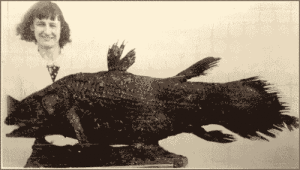
Marjorie Courtenay-Latimer with the modern coelacanth (Latimeria chalumnae) she discovered in 1938
To summarize, the coelacanth was long thought lost to history by the Cretaceous-Paleogene extinction event that wiped out three quarters of the plant and animal species living on Earth (most famously the dinosaurs). It was known only by its fossil record for (almost exactly) 100 years, until, to the world’s surprise and excitement, a living specimen was fished off the South African coast in 1938. Over the next six decades, the coelacanth would be the focus of global headlines, political plays, and scientific rivalries, all the while remaining an enigma to the world that it continues to captivate to this day.
A rare example of a nonfiction story told in a highly narrative form, A Fish Caught in Time does an excellent job of capturing the majesty and mystery of the coelacanth while staying true to the history of its discovery and study. Ms. Weinberg paints such a vivid picture of this 60-year-long story that I couldn’t help but be completely drawn in, as if I were living the story along with the real-life characters: the excitement of discovering the coelacanth wasn’t extinct after all, the rush to find out where it had been hiding for the past 65 million years, the desperation to not only capture a living specimen but keep it alive at the surface, the awe that only a lucky few in history have ever known of watching this deep-sea fish swim in its natural habitat. I’d even go as far as to say that it’s impossible to read this book and not fall in love with the coelacanth!
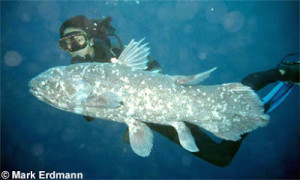
Arnaz Erdmann swimming with the Indonesian coelacanth (Latimeria menadoensis)
A fair note of warning: oftentimes the story focuses more on the researchers who dedicated their lives to studying the coelacanth than on the coelacanth itself. Readers who hope to gain an insight exclusively into the life of the fish may find this a bit off-putting, but then again, it hardly makes sense to attempt to recount the history around the animal without offering even a glimpse into the lives of the people who shaped that history. It’s much more than a story about a fish; it’s a lesson about what it means to be a researcher. It takes intelligence, curiosity, patience, an unquenchable thirst for knowledge, and an unrelenting passion for science, all of which shine through the pages of this brilliant narration of scientific truth.
Overall, A Fish Caught in Time is a captivating read that any science enthusiast will enjoy. I owe much of my appreciation for the coelacanth to this book, and I recommend it to anyone who wants to immerse themselves in a world of marine biology without being overwhelmed by the technicalities of it all. As quickly becomes evident from the first chapter, science doesn’t have to be fictional to blend well with creative writing!
Inspiration
I love science and I love a good story, but it’s rare that I get to enjoy both at the same time, or at least in the same book. A Fish Caught in Time offers an opportunity to glimpse the joy and passion that goes into conducting good science by presenting it in an enjoyable narrative format. Though much research has gone into understanding the coelacanth, A Fish Caught in Time never conveys that research in a manner too difficult for the layman to comprehend or appreciate, making it an unusual kind of literary gem: a scientific subject made accessible to the general public, that is, a community of non-scientific readers.
So if you appreciate science and a good story based on true events, A Fish Caught in Time may be just the inspiration you need for your creative writing! It certainly has been for me; in my opinion, there’s never too much writing inspiration to be found in science!
Off The Bookshelf: Romeo & Juliet/West Side Story
I know it’s been a while since I’ve shared a book on my Off The Bookshelf segment, so this week, I’m going to discuss one of my favorites. I’ve talked about this famous story in depth a few times before, notably to discuss five points that are often missed and the reasons why it’s a greater story than many people think. Once again, I’d like to revisit this classic tale of forbidden love, this time in a double dose. I hope you’ll enjoy this review of one of my favorite books off my shelf: Romeo & Juliet/West Side Story.
Summary
First published in 1965, Romeo & Juliet/West Side Story comprises two stories in one: the stage play Romeo & Juliet by William Shakespeare; and the 1957 Broadway musical West Side Story by Arthur Laurents. The book also includes explanatory notes for unfamiliar expressions in Shakespeare’s play and a foreword by renowned theater director Norris Houghton.
Romeo & Juliet tells the story of two teenagers in Renaissance Verona who fall in love despite the age-old feud between their families, but who are driven to an untimely end by fate and the violent circumstances surrounding them. Inspired by Shakespeare’s play, West Side Story tells the same tragic tale of a doomed romance between young lovers, but updates the setting to modern-day New York and the protagonists to a white American boy and a Puerto-Rican girl torn apart by the racism-fueled rivalry between the street gangs with which they’re associated. As much for Romeo and Juliet as for Tony and Maria, love blossoms at first sight and against the odds, only to be threatened and destroyed by hatred that brings tragedy not just to the young lovers, but to their war-torn society as a whole.
Review
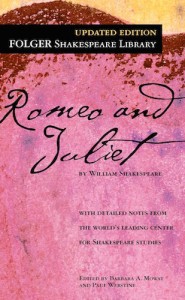 I first read this book as a teenager, shortly after watching the 1961 movie West Side Story as homework for singing lessons (I was to sing “Somewhere” at my first presentation). Long familiar with the plot of the original play, I had fallen in love with the story of forbidden romance and was eager to finally read Shakespeare’s timeless classic for myself. Of course, I’ve made my love for the story itself abundantly clear in the past, so this review will focus a little more on the format of this book than on the pieces within it.
I first read this book as a teenager, shortly after watching the 1961 movie West Side Story as homework for singing lessons (I was to sing “Somewhere” at my first presentation). Long familiar with the plot of the original play, I had fallen in love with the story of forbidden romance and was eager to finally read Shakespeare’s timeless classic for myself. Of course, I’ve made my love for the story itself abundantly clear in the past, so this review will focus a little more on the format of this book than on the pieces within it.
What I find most interesting about this particular book is the way the same story is presented over two very different backdrops: one in Renaissance Italy, the other in 1950s New York. By combining both stories into one volume, Romeo & Juliet/West Side Story offers a unique way to visualize the tale of star-crossed young love across time. The similarities and differences between these popular pieces become clearer as the reader is able to quickly swap a scene in one play for its parallel in the other: the feud between the Montagues and the Capulets becomes a turf war between the Jets and the Sharks, the Capulet ball becomes the dance at the gym, the poetic exchange at Juliet’s balcony becomes a duet on Maria’s fire escape. Each story is beautiful in its own right, but I’ve found that to be able to compare and contrast them so easily makes the fundamental plot all the more fascinating.
 Romeo & Juliet was the first Shakespearean play I ever read, so naturally I was yet unfamiliar with Elizabethan English. This is where the notes in the back of the book came in extremely handy. Essential words and terms are referenced to the line with modern English translations and explanations wherever necessary, so the notes were a tremendous help when it came to deciphering the meanings within Shakespeare’s verse. It’s worth noting that they’re still helpful to any new reader who plans to read more of Shakespeare, as several of the expressions used in Romeo & Juliet commonly appear in his other works. Unfortunately, a similar device isn’t available for West Side Story, which relies on its readers’ familiarity with the music to be fully enjoyable, but this is merely a minor drawback to what is otherwise an equally stunning theatrical masterpiece.
Romeo & Juliet was the first Shakespearean play I ever read, so naturally I was yet unfamiliar with Elizabethan English. This is where the notes in the back of the book came in extremely handy. Essential words and terms are referenced to the line with modern English translations and explanations wherever necessary, so the notes were a tremendous help when it came to deciphering the meanings within Shakespeare’s verse. It’s worth noting that they’re still helpful to any new reader who plans to read more of Shakespeare, as several of the expressions used in Romeo & Juliet commonly appear in his other works. Unfortunately, a similar device isn’t available for West Side Story, which relies on its readers’ familiarity with the music to be fully enjoyable, but this is merely a minor drawback to what is otherwise an equally stunning theatrical masterpiece.
Both Romeo & Juliet and West Side Story have had a profound impact on audiences: one for its poetic deconstruction of romantic ideals, the other for its dramatic commentary on the consequences of social intolerance. The presentation of both plays in one volume brings to light the true timelessness of Shakespeare’s classic, proving that the story of love born against hate will be forever relevant as long as people and society continue to be powerfully motivated by both.
Inspiration
Romeo & Juliet is the archetype of forbidden love thwarted by circumstance, so it’s no wonder the story has translated so well into the modern setting of West Side Story. Whether set between feuding families or warring street gangs, this tragic love story reads not only as the epitome of the passion and dangers of young romance, but as a lesson on how hatred kills. Perhaps for its universal themes of love, intolerance, and the cruelty of fate, the plight of the star-crossed lovers is a tale that has fascinated readers for centuries and certainly will for many more to come. It has served as inspiration for much of my romantic fiction, and to this day I indulge in it whenever I feel the need to satisfy my cravings for drama and romance.
For all the above reasons and more, Romeo & Juliet is and likely always will be my favorite story at its core, regardless of the characters, settings, and details that flesh it out. To be able to enjoy my two favorite versions of the story in a single volume is simply the cherry on top of a classic poetic delight.
Off The Bookshelf: The Ocean at the End of the Lane
For Christmas 2013, I received a copy of Neil Gaiman’s newest acclaimed novel released in the same year. Unfortunately, though I wanted to add it to my Off The Bookshelf segment as soon as possible, other priorities in my life have been delaying my leisurely reading time, so that I only just managed to finish the book last month. It’s a shame I couldn’t get through it quicker, because the truth is that it was a delight to read. So without further ado, here’s my review of The Ocean at the End of the Lane by Neil Gaiman.
Summary
Published in June 2013, The Ocean at the End of the Lane tells the story of an unnamed man and a strange experience he faced in his youth. After returning to his childhood home for a funeral, the middle-aged narrator pays a visit to the farmhouse down the lane, where he met an extraordinary girl named Lettie Hempstock and her mother and grandmother when he was seven. While sitting at the edge of the pond behind the house – a pond Lettie had called an ocean – he suddenly recalls the details of the most fantastic and terrifying event of his past – “a past too strange, too frightening, too dangerous to have happened to anyone, let alone a small boy”.
Review
First off, I have to thank Vanessa Levin-Pompetzki for the book recommendation on her blog, since that’s where I first heard about this novel. I’m glad I stumbled upon her post, because the book really is a wonderful read. A fantasy tale narrated from the memories of a seven-year-old boy, the story touches on such themes as existentialism, the struggles between good and evil, and the discrepancies between childhood and adulthood.
What drew me in most about this book is the way it so subtly yet realistically depicts the simple qualities that make us human, such as curiosity and fear. The author does an excellent job of portraying the theme of self-identity throughout the story without emphasizing it too greatly; it was more of an impression left on me after finishing the book than a prominent point to focus on with every turn of the page. In that respect, I believe the author made a wise decision in creating a seven-year-old protagonist, as few adults in this world experience life as purely and innocently as children do.
This is another favorite theme of mine from the book: the divide between the world of children and the world of adults. From the beginning of the story, it’s implied that the middle-aged narrator sitting by the Hempstocks’ “ocean” feels somewhat disconnected from his youth, which he vaguely remembers as not being a particularly happy time in his life. Throughout his childhood memories, references are made to how differently grown-ups behave compared to children, as well as how difficult it would have been for him to make his parents understand what was happening at the time the strange events took place. Yet the author makes a point of illustrating how these differences are merely superficial; one of my favorite excerpts in the novel comes from a conversation between the narrator and Lettie about the true nature of adults:
Grown-ups don’t look like grown-ups on the inside either. Outside, they’re big and thoughtless and they always know what they’re doing. Inside, they look just like they always have. Like they did when they were your age. The truth is, there aren’t any grown-ups. Not one, in the whole wide world.
– Lettie Hempstock, The Ocean at the End of the Lane (Neil Gaiman, 2013)
Overall, Mr. Gaiman has constructed a beautiful work of art that readers of any age group can appreciate. Personally, I believe this novel would appeal mostly to adults for its deeper message of understanding the world and one’s own self, which many of us tend to forget as we grow older. Whether we need reminding to search for our true identities or to compare our past perspectives to our present outlook on life, The Ocean at the End of the Lane is a captivating read with the potential to leave its readers asking the simplest questions they didn’t even know were hidden in the depths of their minds.
Inspiration
In a way, The Ocean at the End of the Lane reminds me of The Little Prince in that the story centers on life and existence from the perspective of a child, with a gentle hint of fantasy to add to the intrigue of the narrative. I love stories that depict the world from the eyes of children, as such tales remind me of how I used to live when I was younger. For artists in particular, it’s interesting – if not essential – to remember the past once in a while, and there’s nothing like a well-written work of fiction to take us there in ways we never even imagined.
So if you too enjoy stories that can make you see the world and even your own life in a different light, I highly recommend giving this book a read. You may just catch a glimpse of yourself within the pages of Gaiman’s mysterious “ocean”.
Off The Bookshelf: Treasury of Christmas Tales
Remember when you were a kid, how you enjoyed reading or listening to holiday stories with your family at the end of the year? That was a good part of my childhood, as we had several Christmas-themed books sitting on our shelves when I was growing up. So to celebrate the season, here’s a brief review of a Christmas book we had when I was a kid: Treasury of Christmas Tales. Enjoy!
Summary
Treasury of Christmas Tales is a children’s book published around 1994 and consisting of a collection of classic Christmas stories. The book was put together by author Carolyn Quattrocki, and includes colorful illustrations by Susan Spellman and adaptions of works by writers such as Charles Dickens (“A Christmas Carol”), Clement C. Moore (“‘Twas The Night Before Christmas”), the Brothers Grimm (“The Elves and the Shoemaker”) and Hans Christian Andersen (“The Little Match Girl”). Written in simple text, Treasury of Christmas Tales contains 19 stories, all themed around Christmas and the winter holiday season:
- A Christmas Carol
- The Wishing Star
- The Little Match Girl
- The Christmas Mouse
- Jingle Bells
- The Magic Toy Shop
- The Littlest Angel
- The Twelve Days of Christmas
- The Christmas Bear
- ‘Twas the Night Before Christmas
- The Nutcracker
- Santa Claus is Coming to Town
- The Tiny Elf
- O Christmas Tree
- The Elves and the Shoemaker
- The Little Drummer Boy
- Christmas Carols
- The Happy Snowman
- Rudolph’s Adventure
Review
I remember I enjoyed reading this book with my mother and sisters when I was a child. Around the end of the year, my mom would read some of these tales to us while we followed along with the pictures, which really made for a fun family experience.
What I especially enjoyed about this book was how accessible the text was for us at our young age. Originally complex tales like “A Christmas Carol” were adapted into language that we as children could easily understand, but that didn’t lose the Christmas spirit of the story. Even sad tales like “The Little Match Girl” were told in a way that was uplifting and heartwarming. I also liked the colorful illustrations on every other page of the book, which made the stories even more comprehensible and memorable. It isn’t a broad collection for sure, but it does have good stories and illustrations that made it a joy for us to read every holiday season.
Inspiration
Though I hadn’t read this book since I was a kid, recently rediscovering it among my childhood belongings brought back pleasant memories of enjoying the holiday season with my family. It’s always fun to revisit stories from a happy time in your life, and the tales I enjoyed as a kid usually have a way of inspiring me to create stories of my own as an adult. So if you have some good holiday stories from your childhood, I encourage you to read them again this season. You may find just what you need to write your own cheerful Christmas tale!
Off The Bookshelf: The Little Prince
I wanted to start this year’s Off The Bookshelf posts with a review of a beautiful story that I finally got around to reading recently. I know I really should have read it (or rather, finished reading it) a long time ago, and after I did, I realized what I had been missing since I was a kid. So long overdue, here is a review of a classic tale by a French aviator and author: The Little Prince, by Antoine de Saint-Exupéry.
Summary
The Little Prince (or Le Petit Prince, in its original French title) was first published in 1943 by Reynal & Hitchcock, in both English and French. Narrated in the first person, the book tells the story of a pilot who ends up stranded in the desert, where he meets a strange boy from a distant and tiny “planet” (which is really an asteroid). Over the eight days it takes him to fix his plane, the narrator gets to know the story of this “Little Prince”, from the life he had on his planet to the journey that brought him to Earth. The Little Prince enchants the pilot with his eccentric and poetic outlook on the world, and when the time comes for both of them to return home, the narrator is utterly heartbroken to lose the only friend he’s ever known who could appreciate life with the beautiful innocence of a child.
Review
What stands out most about this book is how it criticizes the “adult” way of thinking. The story begins with the narrator telling his readers how he was discouraged from pursuing art by grown-ups who couldn’t comprehend his drawings when he was younger. Since that time, the Little Prince was the first person he ever met who understood the vision he had as a child. Still very young himself, the Prince thus represents the simple way children see the world in contrast to the analytical views of adults, and does so in a way that makes the former much more appealing.
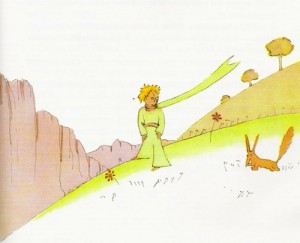
The Little Prince and the Fox
(Illustration by Antoine de Saint-Exupéry)
Though appearing to be a children’s book, The Little Prince is arguably targeted at adults who have forgotten how to understand the world the way they should. We as mature readers have it constantly pointed out to us that our manners are flawed, that we are too concerned with “matters of consequence”. Basically, we’ve become so focused on trivial details that we’ve lost sight of the things that are truly important. Perhaps this idea is most evident in a scene involving another well-spoken character of the story: a fox that the prince meets on his journey through Earth.
One sees clearly only with the heart. What is essential is invisible to the eye.
– The Fox, The Little Prince (Antoine de Saint-Exupéry, 1943)
The Little Prince is a charming tale fit for readers of all ages. For adults, it’s a reminder of the lessons that can be learned from youth, many of which may have been lost long ago. As for children, they can find embedded in these pages the encouragement to keep living their own special way, and, if nothing else, a friend who can teach them the real matters of so much importance.
Inspiration
If there’s one thing I loved most about this book, it was the way it constantly reminded me how I used to see the world when I was a little girl (and how I probably should see it again as a woman). Living in a world that seems to demand we grow up as quickly as possible, it’s easy to forget what it’s like to experience life through the innocent eyes of children. The Little Prince’s questions and observations, coupled with the grown-ups’ awkward answers, served as a lesson on how I should never lose touch with the curious child still in my heart, for to do so would be like losing a very special friend.
Overall, I enjoyed this book very much. Though it did break my heart a little, it was wonderful to read a story that could effortlessly shine light on the poetry children can bring to the world. The Little Prince has a lovely perspective on life, and after reading his story, I only hope I can remember to keep setting my inner child free. She is, after all, a very important friend to the grown-up writer I’ve become.
Off The Bookshelf: How The Grinch Stole Christmas!
It’s the holiday season, and that means it’s the perfect time to share a blog post about a Christmas-themed story! I had originally planned this post for next week (Christmas Day), but when I realized Christmas is also the last Wednesday of the year, I decided to bump this review up and save next week for a special post instead. So here it is a week early, a review of another of my favorite Dr. Seuss books: How The Grinch Stole Christmas!
Summary
Every Who down in Whoville liked Christmas a lot,
But the Grinch, who lived just north of Whoville, did NOT!
– How The Grinch Stole Christmas! (Dr. Seuss, 1957)
Originally published by Random House in 1957, How The Grinch Stole Christmas! tells the story of a grouchy creature known as the Grinch and his plot to ruin Christmas for the town of Whoville, located just south of his cave on Mount Crumpet. Annoyed every year by the festivities of the warm-hearted Whos, he dons a makeshift Santa Claus costume and descends into Whoville on Christmas Eve to steal all their presents, food and decorations, in the hope of stopping the holiday from ever arriving. Come Christmas morning, however, he is surprised to find that despite his best efforts to discourage them, the Whos still have the spirit of Christmas in them, and that day, the Grinch learns a valuable lesson about the true meaning of the holiday season.
Review
I’ve always appreciated How The Grinch Stole Christmas! for its uplifting message about the holiday spirit. With all the commercialization that Christmas has undergone over time, it’s easy to lose sight of the simpler things we should enjoy during the holidays, such as the company of our loved ones and all the possibilities that come with a new year. Puzzled to hear the Whos singing on Christmas morning, the Grinch starts to wonder why his plan didn’t work, and comes to a heartwarming revelation.
Maybe Christmas, he thought, doesn’t come from a store.
Maybe Christmas, perhaps, means a little bit more.
It probably goes without saying that the author’s intention with this story was to criticize the commercialization of Christmas. Interestingly, the Grinch has been compared to Seuss himself, who claimed to have found inspiration for the character after seeing a “Grinchy” face in the mirror on December 26th. His idea was to write this sour character in order to rediscover the meaning of Christmas, which he felt had been lost on him at some point in the past. The same way he did with Horton Hears a Who!, Dr. Seuss drew from his own life experience to tell a heartwarming story that readers of all ages can enjoy for its important lesson.
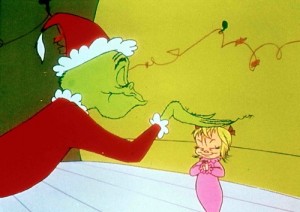
The Grinch and Cindy Lou Who, How The Grinch Stole Christmas! (1966)
Like most of Dr. Seuss’s children’s books, How The Grinch Stole Christmas! is written in rhyming verse and illustrated with colorful and bizarre characters, making it a fun and memorable read for the whole family. A noteworthy adaptation of the book is the 1966 TV special directed by Chuck Jones (of Looney Tunes fame). I remember watching it often as a kid and smiling every time the Grinch’s heart grew three sizes at the end of the story (not to mention Cindy Lou Who was probably the sweetest little thing I’d ever seen in a classic cartoon). It’s an adaptation I’d highly recommend, so if you haven’t seen it yet and it runs annually on TV in your region, be sure to watch it this holiday season! And while you’re at it, you may want to read the book again; it’s truly a Christmas classic!
Inspiration
What I find most inspiring about this book is the way it never fails to fill me with holiday cheer, regardless of the time of year. I enjoy a good story where the villain is the main character, and seeing the Grinch embrace the Christmas spirit helps me remember that there’s more to the holidays than presents (not that I ever needed much reminding, with a wonderful family like mine).
Overall, How The Grinch Stole Christmas! is a very enjoyable read, and one that should definitely be on every Seuss fan’s bookshelf. Whether I’m in the mood for his fun stories and illustrations or for his good life lessons, I always find something wonderful to enjoy in Dr. Seuss’s charming holiday tale! Enjoy, and have a very Merry Christmas!


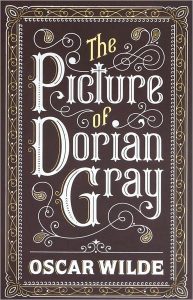
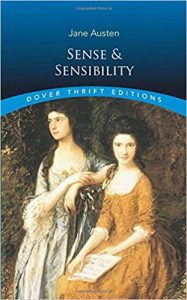
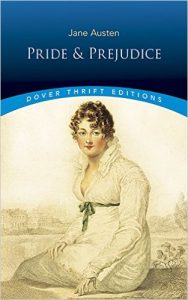
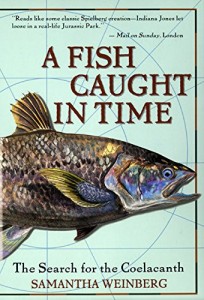

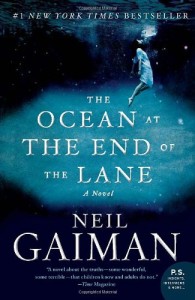
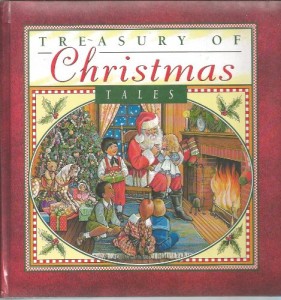
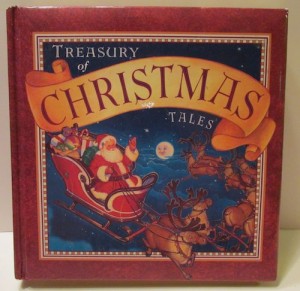
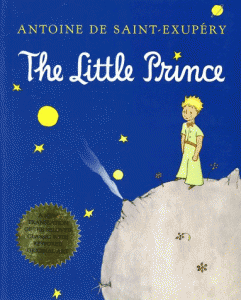
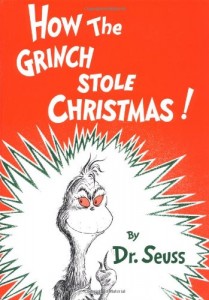

Recent Comments